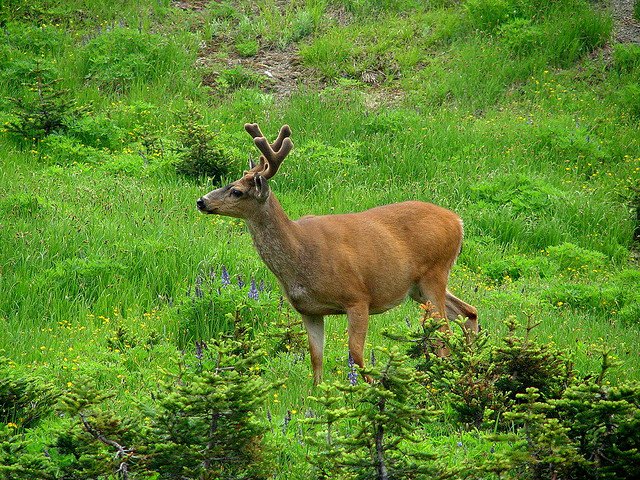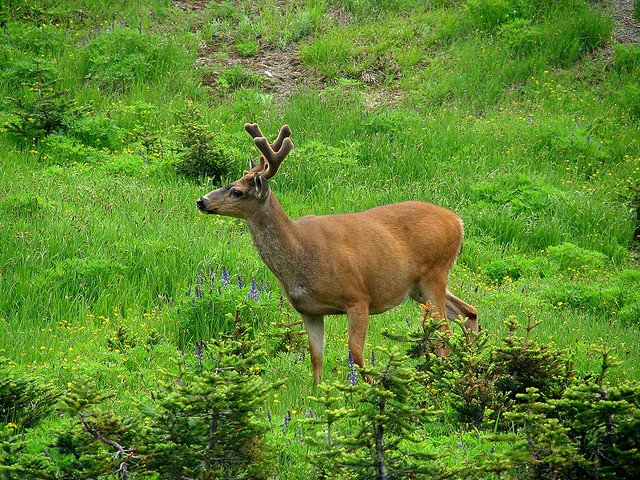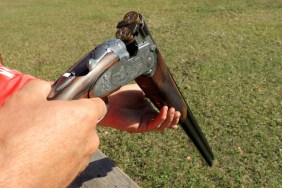
If you know anything about blacktails, you can appreciate how they got the nickname “gray ghosts.” I have sat around many campfires watching my hunting partners take turns scratching their heads as they attempt to make sense of these elusive creatures and their patterns.
One fellow, who used to have hair before he started, somberly exclaimed, “You know, after 30 years of this, I still have no idea where they’re going to be. I guess that’s what keeps me coming back—it’s a complete mystery!”
A colombian blacktail is a deer hunter’s most prized harvest in the west. Although you hear a lot of people talking about mule deer, mostly because of their size, the odds of finding and killing a blacktail are much less.
Blacktail deer are sneaky, illusive and very smart. Understanding their patterns is like learning advanced math. Here are a few preseason tips that can greatly improve your odds of bagging one of these incredibly challenging deer.
Start scouting
Although it is an ongoing argument whether or not patterns are reliable in regards to blacktails, I have seen the same big buck three years in a row where I hunt and I can guarantee you that he is there as we speak. I can almost guarantee that he will be there next year too because I haven’t got close enough for a shot yet, nor has anyone else, apparently.
I like to start scouting in early July and make it a habit to visit my best half-dozen spots to see what’s happening. Blacktail usually have a small range (a few square miles), so theoretically, if you spot a good one, he’s likely to be around come opening day. Blacktail are most likely to be out at the crack of dawn or right before dark so be sure to get there early and wait. Patience is a virtue that pays off big-time in deer hunting.
Tracking techniques
Learn as much as you can about blacktails and their habits. You want to know what they eat, where they water, where they bed and where they travel during a given day. It’s a lot of work, but obsessing over the minor details can give you a broad picture of the animal you’re hunting. I came across a group of hunters (the once a year type) who were following a set of big tracks.
I heard one of them say “See those dew claws? That’s how you can tell it’s a buck!” I can’t tell you how many hunters think that does don’t have dew claws—not true, and as a matter of fact, sometimes the biggest tracks around are from a big doe. As I went past these guys on my quad, I spotted the deer they were tracking up the road a ways, and guess what . . . it was a big doe. Another good tip is to look for tracks going both directions on a game trail. This is a good indication that it is frequently used.
Set up a game camera
Considering that blacktails tend to stick to the same areas, setting up a game camera in a spot where you find a good amount of sign is a great way to see what actually lives there. There’s a good chance that he’ll be around come hunting season.
Stalking
This is my all-time favorite pre-season activity. It hones your skills, keeps you in shape, and lets you practice without the pressure you might have when you’re locked and loaded. And, you won’t beat yourself up if you blow it.
Think ahead
This paid off big for me one year and now I do it every year. Once you have a general idea of where you’re going to hunt, come up with a few backup plans. Remember that the weather is going to get hotter as deer season approaches. Start scouting for bedding areas on cool north slopes. Take note on where watering holes are. Will they be there later? Consider where deer may go when the pressure is on. Think like a deer—where would you go to hide? I like to plan routes to thick sheltered areas that I can get to quickly and easily when I can’t find them where I thought they’d be. Considering that they usually don’t go too far when spooked, figure out where they may be and make a plan. Lastly, spend a lot of time glassing the whole area. If you are patient and make the time to get out early, you are greatly increasing your chances of having meat in the freezer next winter.








